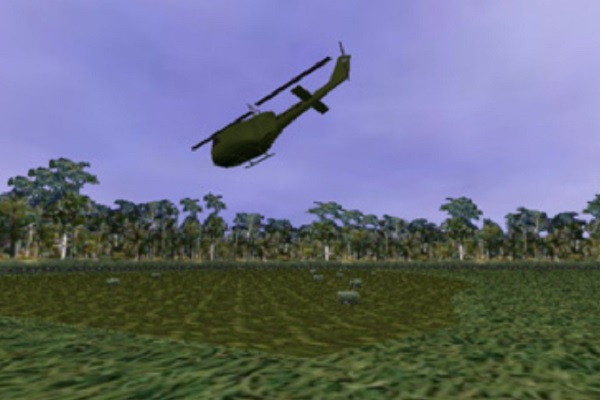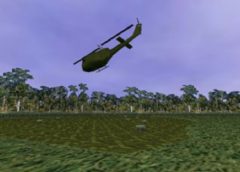For the whole virtual reality industry, it was certainly a turbulent couple of years with some big-name VR companies failing and some still hanging on by a tread. But it was far from the end for VR, it just slipped out of the public limelight and into the health sector.

In 1997 Georgia Tech and Emory University collaborate to use VR for the treatment of PTSD in war veterans. This is still a crucial aspect of PTSD treatment and research ven today. Controlled exposure to traumatic triggers is crucial to treating the symptoms of PTSD. VR technology gave therapists unrivalled control over what the patients sees and experiences.
This was known-as Virtual Vietnam. The environment allowed users to wear a virtual reality helmet and ride a combat helicopter. Additionally, users could walk through a hostile helicopter landing zone. The project effectively illustrated the capability of virtual environments to immerse a person in a synthetic world incorporating 3D graphics and audio. Furthermore, it highlighted the applicability of virtual environments to application areas including entertainment, medicine, and training.
Georgia Tech and Emory University collaborate to use VR for the treatment of PTSD in war veterans. This is still a crucial aspect of PTSD treatment and research today. Controlled exposure to traumatic triggers are crucial to treating the symptoms of PTSD. VR technology gave therapists unrivalled control over what the patients sees and experiences. Georgia Tech and Emory University researchers used VR to create war zone scenarios for veterans receiving exposure therapy for PTSD. This was known-as Virtual Vietnam

The U.S Army also approved a standard protocol for Distributed Interactive Simulation and the U.S. Army’s Synthetic Theater of War demonstration project, a large-scale distributed simulation of a complete theatre battle capable of involving thousands of participants. Multiple training sites nationwide were connected by means of a local-area network (LAN), which in turn connected to a wide area network (WAN)
Trainees entered a tank, helicopter, or other simulators and all participate in the same simulated combat missions. The simulation was only “interactive” in the sense that humans interact with the computers to influence the simulation. The battle did not follow a set script and trainees win or lose on the basis of their performance. The core elements of this simulation are still used today to train troops in various vehicles and mission operations.
Also this year the Virtual Reality Modelling Language (VRML) was finalised. First introduced in 1994 it was intended for the development of “virtual worlds” without dependency on headsets. The Web3D consortium was subsequently founded in 1997 for the development of industry standards for web-based 3D graphics. The consortium subsequently developed X3D from the VRML framework as an archival, open-source standard for web-based distribution of VR content. WebVR is an experimental JavaScript application programming interface (API) that provides support for various virtual reality devices, such as the HTC Vive, Oculus Rift, Google Cardboard or OSVR, in a web browser and is still in use with many bedroom developers preferring it over more complex software systems.

Even Spielberg joined the VR club this year! The venture called “Gameworks arcades” first opened in September 1997 as a joint project of Universal Studios, Sega Corporation, and Dreamworks SKG; many individual VR arcade rides, beginning with Sega Arcade’s R360 gyroscope flight simulator and, finally, Visions of Reality’s VR arcades, the spectacular failure of which many contributed to the bursting of the investment bubble for VR ventures in the 1990s.
This was also the year Brian Williams from NBC News warned people about the dangers of using virtual reality which pushed even more people away from it, especially even more investors. But yet…somehow VR kept going and going! More headsets would be released and more VR companies were born.


